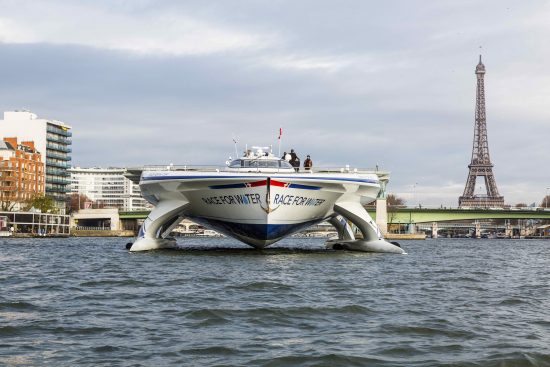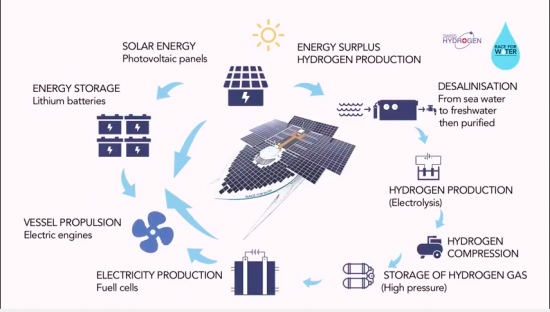
This Super Green Yacht Shows the Way Towards Superyachts in 22nd Century
One of the most unusual vessels in the world is Race for Water. We toured the boat and wrote about her when she was known as Turanor Planetsolar
Now the catamaran, covered in solar panels has become even more self sufficient now that a new innovative system that will propel the craft using hydrogen has been fitted
Designed specifically for scientific research this unique floating platform has already done a great deal to raise awareness about ocean conservation and pollution of the seas with plastic waste
To broaden the reach of her sailing mission, Swiss Hydrogen have equipped the vessel with a system for hydrogen production to make it possible for her to sail the completely free of the need for fossil fuels.
Twenty five 300-bar hydrogen tanks, two 30kW fuel cells and two 5kW electrolysers will now supplement the 500m² of solar panels and the four lithium ion batteries (754 kWh) on board.
The hydrogen system allows for the storage of 2,800 kWh, equal to a gain of up to 6 days of self-sufficiency, with a very advantageous mass balance, with hydrogen storage 10 times lighter than electricity storage using batteries.
Solar / hydrogen interaction works while sailing during the day. Solar energy, which is collected by the solar generator situated on the deck of the vessel, is used both to provide power directly to the ship’s engines and for the hotel services on board. It also charges the batteries, to power the boat at night.
When the vessel is not sailing, surplus solar energy is used to produce hydrogen. When necessary, the hydrogen is converted into electricity through the fuel cell system that will then power the engines or recharge the batteries.

This is how the system works
- Sea water is pumped, desalinated and stored on board
- This fresh water is then purified before being electrolysed thanks to the surplus photovoltaic energy available.
- The electrolyser produces hydrogen at 50 bar, which is dried, compressed at 350 bar and then stored in specially dedicated cylinders. There is capacity for nearly 200kg of hydrogen to be stored.
- Hydrogen will be converted to electricity, as required, by the two 30kW fuel cells, which will maintain the charge level of the batteries or can directly power the electric engine (propellers).
This means Race for Water with her infinitely clean and reusable energy system for propulsion as well as for on board living is carving out a pathway for the future of the superyacht
